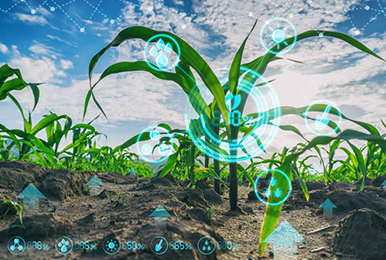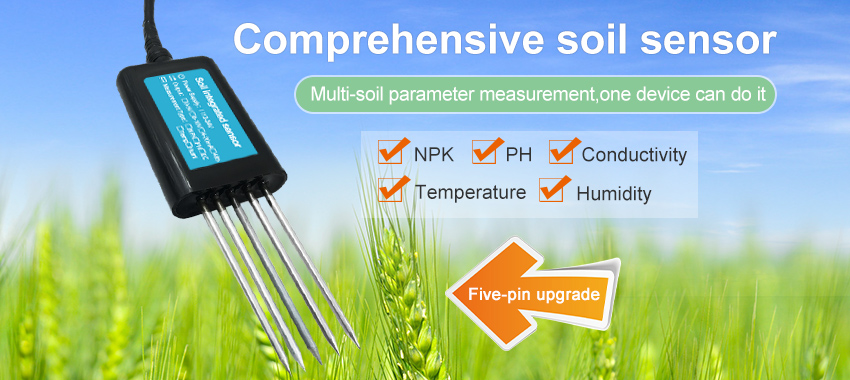Background:
Agriculture and agriculture are two of the oldest and most important fields in the world. Over time, with the introduction of various agricultural techniques, man has made great progress in farming and growing crops. This trend will continue as robotic systems and artificial intelligence (AI) make farms more profitable, efficient, safe and environmentally friendly, and tech companies like JXCT will lead the AI agriculture revolution. Various agricultural sensor devices enter people’s production activities.

The important role of agricultural development:
As the world’s population continues to grow and the amount of arable land shrinks, farmers must be creative and efficient to produce more crops using less land by making arable land more productive and productive.According to the World Government Summit report entitled “Agriculture 4.0 – The Future of Agricultural Technology”, we will need to produce 70 per cent more food by 2050 as demand continues to grow – and with limited farmland, much of the increased supply will need to come from improving the efficiency of existing growth points.
Agriculture has fallen behind and about 800 million people worldwide suffer from hunger, with the world population expected to grow to nearly 10 billion by 2050. On the current trajectory, 8 per cent of the world’s population will still be undernourished by 2030. Increased Challenges Water, environmental impacts and reduced arable land in the context of global warming and population growth are bringing humanity to a point where it must adapt and innovate to survive. Just as in the era before the first agricultural revolution, the way we live and consume does not allow the status quo to continue.

A new stage for development:
The use of AI technologies has become increasingly popular in the farming community as these systems are increasingly integrated with current machinery. On its current path, agricultural monitoring to support the Internet of Things is the fastest growing technology area in agriculture, projected to reach $4.5 billion by 2025. Overall global spending on smart, connected agricultural technologies and systems, including the use of ARTIFICIAL intelligence and machine learning in agriculture, is expected to triple annual revenue to $15.3 billion by 2025.
Agriculture 4.0 will no longer rely on the uniform application of water and other crop inputs across the entire field. Instead, by using AI as part of Agriculture 4.0, farmers will use the minimum quantities needed to produce and target specific areas to produce higher yields more efficiently and profitably. These smart technological advances mean that the future of agriculture and agricultural operations will look very different, including smart technological advances such as sensors, equipment, machines and information technology. Data collected by farmers through these technologies can be used for collaboration and sharing among stakeholders through field trial management to plan, coordinate and analyze field trials to drive new innovations in agriculture.
IOT development
The possibilities for using AI in today’s agriculture seem almost limitless, but the ability to improve crop yield forecasting is arguably one of its most critical capabilities. The process involves using real-time sensors and drones to provide data and visual analysis based on soil, meteorological, environmental and crop parameters. Ultimately, this helps farmers make the most of their crops and avoid waste.
Another useful way to use AI to drive waste reduction is to optimize crop nutrition applications. As product prices rise, so does demand for technologies that reduce costs while increasing production. Among other uses, these new AI technologies can help farmers and agronomists calculate the right combination of pesticides and fertilizers to use in a particular area, while limiting application to areas of the field that are shown to require treatment. In addition, other areas of focus across the industry, such as yield mapping for discovering patterns, identifying irrigation leaks, addressing labor shortages and monitoring livestock health, can be made easier and more efficient using AI.
Ultimately, in order for the industry to adapt to growing trends and thrive, it is inevitable that we will see the agricultural world increasingly adopt multiple sophisticated tools and sophisticated technologies — from ARTIFICIAL intelligence, robotics and drones to the Internet of Things (IoT), temperature sensors, aerial field images, ground/soil sensors and GPS. However, as with any technology, achieving real, long-term success goes beyond physical devices and depends entirely on how they are used. For the agricultural world, improving these critical efficiencies and increasing productivity depends on the effective use of tools to extract and provide useful real-time information to farmers, as well as ensuring accurate management of these devices, all of which have different outputs, formats and data types.

5 in 1 integrated soil sensor
The soil integrated sensor(5 in 1 soil sensor) is a soil all-in-one sensor independently developed by the company, which can simultaneously monitor soil temperature, soil moisture, soil pH, soil electrical conductivity (EC), soil nitrogen(N), phosphorus(P) and potassium(K). The soil all-in-one sensor(5 in 1 soil sensor) adopts a new generation of international TDR measurement method, and the detection accuracy can reach within 3%; the special metal probe greatly extends the service life of the product.